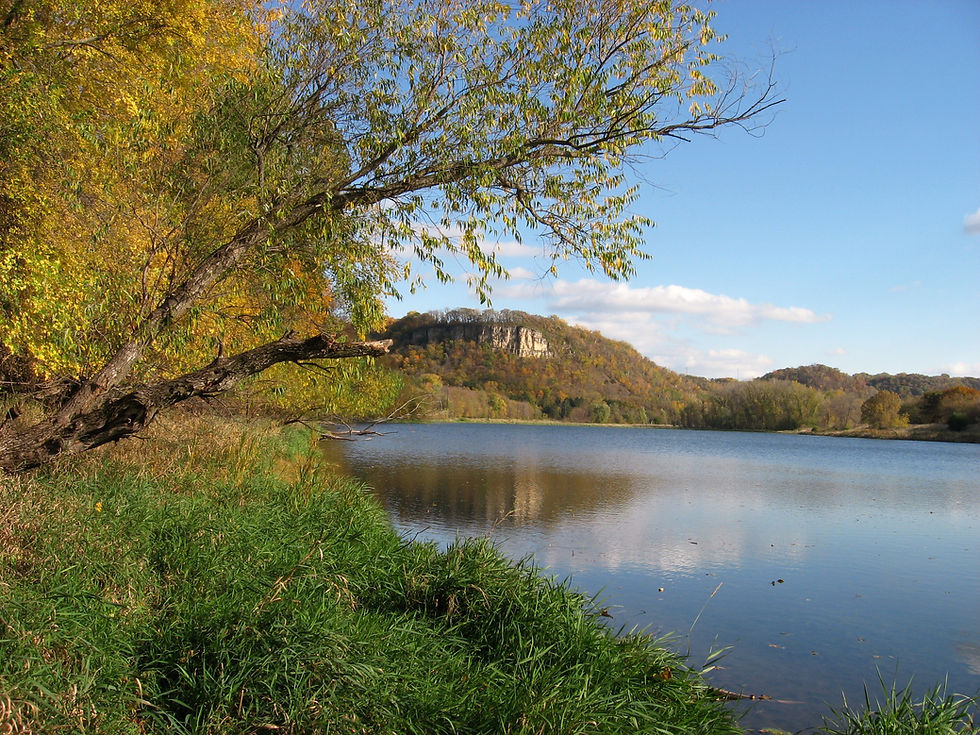Wood Ducks Return and Turkeys Strut
- Bruce Ause
- Apr 3, 2017
- 3 min read

Drake and Hen Wood Duck
Since my last posting on our blog, many species of waterfowl have arrived in our area from their winter haunts. Some of these waterfowl are sticking around for the time being while others are continuing on their northward migration. On Tuesday March 28th, while canoeing in the Cannon river bottoms I observed many flocks of tundra swans heading north to their arctic nesting grounds. Flocks large and small were taking advantage of the sunshine and calm wind conditions. On Thursday March 30th, we observed the first pair of strikingly colorful wood ducks on our backyard pond.

Wood Duck Drake
This is no April Fool's joke, but on Saturday April 1st we observed ten wood ducks on our small pond at one time. In the next couple weeks, the hens will start checking out the two nesting boxes that are available. Sometimes it will take several visits before they decide to start making a nest.

Strutting Wild Turkeys
While resident wood ducks and Canada geese are checking out potential nesting sites, tom turkeys are strutting their stuff and attempting to impress some hens.

Tom Turkeys
For the last 10 days, it has been very common to observe tom turkeys in full display as we drive between Wacouta and Red Wing. They can be observed on the right side of highway 61 near the old apple market.

Male Pileated Woodpecker
I took down all of our suet feeders a couple weeks ago as with the arrival of warmer weather, the suet tends to get rancid and messy to work with. For that reason, we were surprised to have a male pileated woodpeckers come in and land on a peanut feeder 2 feet from our kitchen window one morning.

Pocket Gopher Mound
A good indication in the spring that all the frost is completely out of the ground is when you can observe fresh pocket gopher diggings. As a teenager growing up in the farm country of southern Minnesota, I made my spending money by running a gopher trapline. I received a matching bounty of ten cents from the township and farmer for every gopher that was trapped. On occasion, my mother would request I bring home some of the fresh soil from the mounds. She would then use it for transplanting some of her house plants.

Eagle on the nest
The eagles using the nest on the east end of Wacouta pond are still incubating their eggs. I'm expecting that the eaglets will start hatching in the next week.

Coyote
On my paddle in my solo canoe into the Cannon river bottoms mentioned earlier in this post, I was very fortunate to come across a large coyote. Because they are so wary, this is the first opportunity I have ever had to photograph one. I'm guessing it came to the edge of the water either to get a drink or check for a dead or injured waterfowl. At the time, there were hundreds of ducks and coots swimming in the immediate area.
One of the current theories regarding the rapid spread of Lyme Disease is the explosion of the coyote population. Thirty years ago red fox outnumbered coyotes in southeastern Minnesota substantially. Now it is quite rare to see red fox because they have been pushed out of their territories by coyotes. One of the biggest carriers of deer ticks which transmit Lyme disease are field mice and voles. Red fox are one of the main predators of mice and voles while coyotes prefer larger prey.




Comments